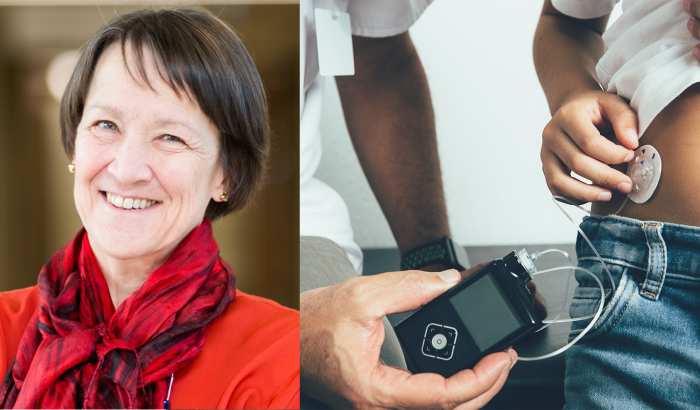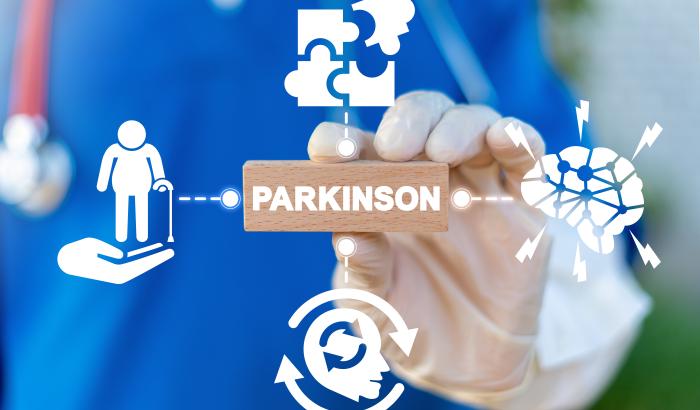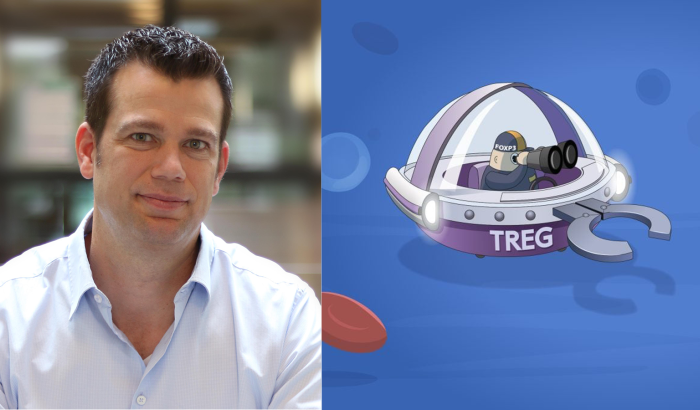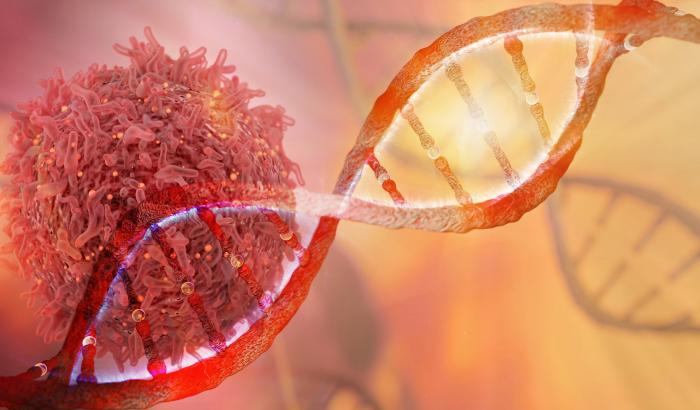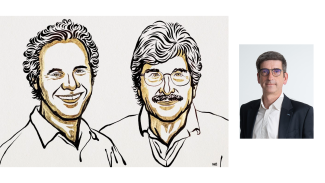
© Ill. Niklas Elmehed © Nobel Prize Outreach; LIH
Left: The two American Nobel laureates Victor Ambros et Gary Ruvkun; right: Dr. Yvan Devaux from the Luxembourg Institute of Health
The Nobel Prize for Medicine was awarded on Monday 7 October 2024 to Professors Victor Ambros and Gary Ruvkun for their work on microRNAs.
These tiny molecules play a key role in regulating gene expression, i.e. they help to control which genes are activated or deactivated in our cells. They play a crucial role in regulating many biological processes and even in preventing disease.
Dr Yvan Devaux, from the Luxembourg Institute of Health (LIH), is working on these microRNAs. His aim is to develop new diagnostic and therapeutic methods for heart and brain diseases.
Can you sum up today's Nobel Prize in Medicine in a few sentences, and tell us whether it is deserved?
Yvan Devaux: ‘The Nobel Prize for Medicine 2024 was awarded today for research into microRNAs. MicroRNAs are small molecules found everywhere, in our cells and our blood, which regulate the expression of our genes, and therefore the expression of proteins in our bodies.
‘The Nobel Prize is, in my view, very deserved, because the discovery of microRNAs has opened up a very broad field of research and applications; at present, thousands of research teams around the world are working hard on them to try to understand how these small molecules are involved in various diseases, such as degenerative diseases (Parkinson's, Alzheimer's) or cardiovascular diseases.
The field is particularly promising because microRNAs can be used to diagnose and treat these diseases, in particular by modulating them with synthetic tools. It is possible to administer small synthetic RNAs to humans that increase or decrease the expression of microRNAs involved in the disease.
And by the way: It’s the third time in past 5 years that a Nobel Prize is awarded to the topic of RNAs, after the discovery of RNA modifications that allowed the development of mRNA vaccines in 2023 (Profs Katalin Karikó and Drew Weissman) and the discovery of RNA editing in 2020 (Profs Jennifer Doudna and Emmanuelle Charpentier). This goes to show the importance of these molecules in biology and medicine.'
Do you have any concrete examples of the application of microRNAs in the field of health?
Yvan Devaux: ‘A few small interfering RNAs are currently approved by health institutions, for example for the treatment of hypercholesterolaemia, which is a major public health problem. Numerous studies are underway into the use of microRNAs for the treatment of various pathologies.
Another area of research is heart failure, also a major health issue: a molecule has been identified by a German team that could reduce the problems associated with heart failure, and is showing very promising results’.
Can you describe the impact of this new field of research on your career?
Yvan Devaux: ‘Before I became director of the cardiovascular research laboratory at the LIH, it was Dr Daniel Wagner, a cardiologist at the CHL (Centre Hospitalier de Luxembourg), who set it up. I remember driving to Maastricht with him in 2008 to see a scientific colleague: it was dark and we were driving through the snow in the Belgian Ardennes. We were about to publish one of the very first studies on microRNAs, which was finally published in 2010 and focused on patients who had suffered a myocardial infarction at the CHL. It is currently one of the most cited studies in the field, so we were among the pioneers of this research.
Unfortunately, Daniel Wagner passed away too early, so a foundation was set up in his honour: the Daniel Wagner Heart Foundation, which funds a large part of our research. The work of this foundation is essential.
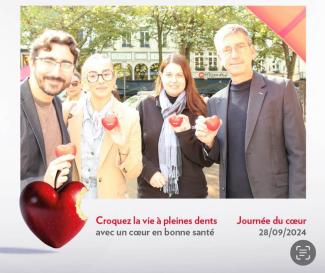
Photo: Part of the LIH cardiovascular research laboratory team (on the right in the photo: Yvan Devaux) at World Heart Day, which took place on Saturday 28 September at Place d'Armes in Luxembourg. The aim of World Heart Day is to raise public awareness of cardiovascular risks and the research being carried out in Luxembourg in this area. Credit: www.photobooth.lu; Ministry of Health.
How does your research contribute to the specific field of microRNAs?
Yvan Devaux: ‘The LIH is very interested in research into inflammatory and neurodegenerative diseases such as Parkinson's disease. The aim is to identify the microRNAs involved. In fact, I'm in the middle of preparing a presentation on a very specific microRNA, called microRNA-124, which could improve the prognosis after cardiac arrest. In collaboration with the CHL intensive care unit, we have found that this microRNA-124 is released in large quantities by the brain in the event of cerebral damage following cardiac arrest; its presence can be measured using a simple blood test. Knowing this enables us to improve patient treatment by identifying this poor prognostic factor at an early stage and implementing immediate neuroprotective measures.
The presentation will take place during the Translational Medicine Research Day on 16 October at the CHL.
For more information on the Nobel Prize, follow this link to the official press release.
Author: Diane Bertel
Editor: Michele Weber

